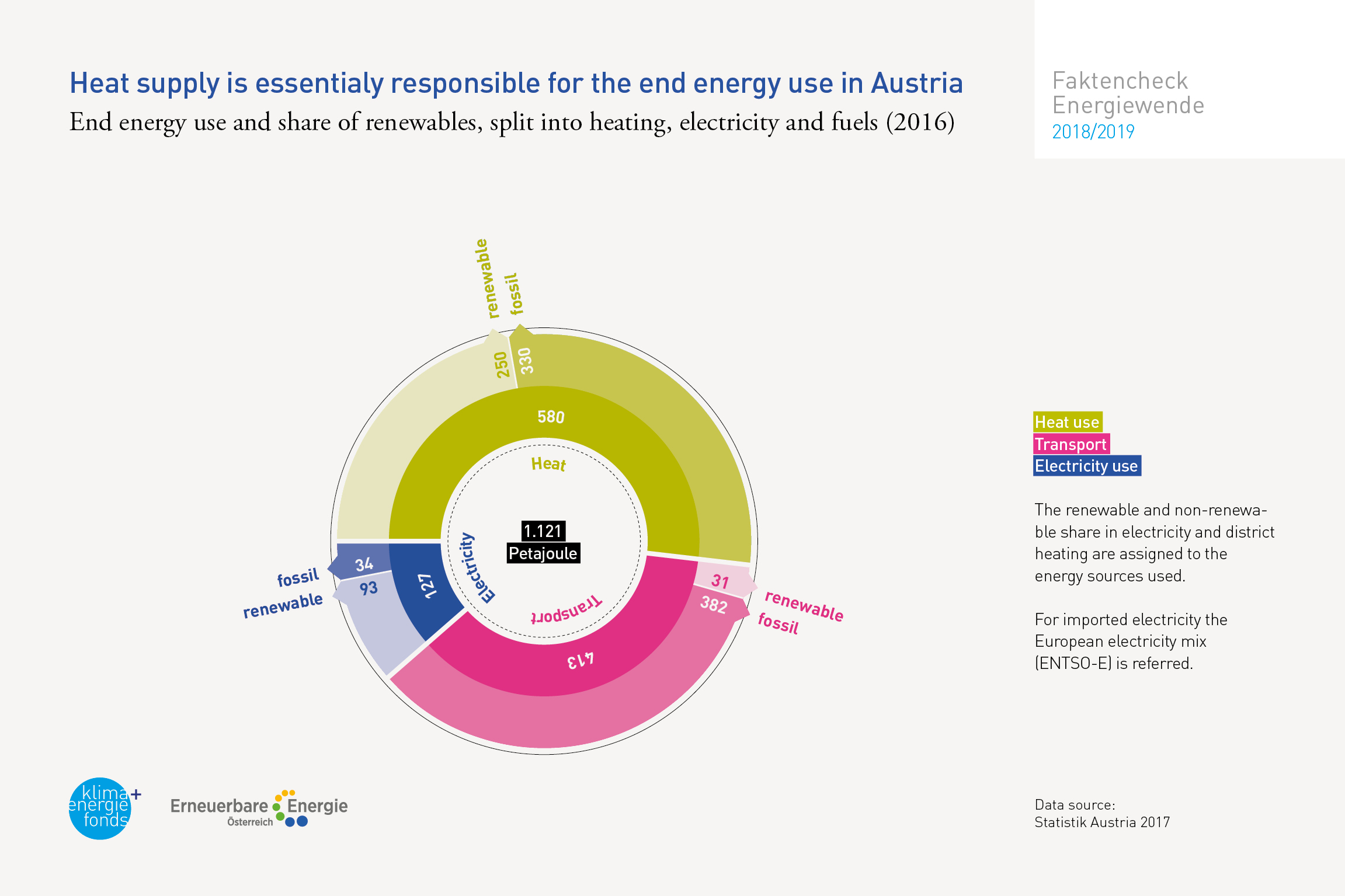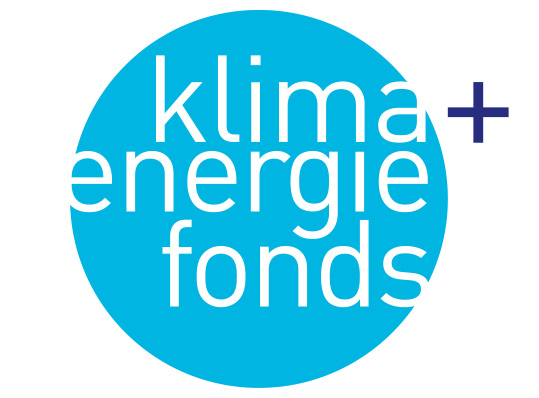The energy transition requires a change in heat generation
Myth
Austria is already in a very good position with regard to its heat supply. Due to production of electricity through renewables, which increasingly will contribute to heat generation, the emissions problem will take care of itself.
Facts
Heat supply is responsible for over half of Austria’s end energy use, and almost 60% of this is still based on fossil fuels. For climate protection to succeed, the change in heat production is therefore a decisive factor. However, Austria’s electricity supply also still demands attention, constituting around 14% fossil fuels and 10% power imports with a high share of coal and nuclear.
Reaching the Paris targets, and thus limiting the climate crisis, can only be achieved by largely phasing-out fossil fuel use by the middle of the century. Heating space and hot water supply account for around one third of Austrian energy use and around 20% of Austria’s CO2 emissions. The heat sector is responsible for over half of end energy use (1,121 peta-joules in 2016) in Austria. While 73% of the electricity demand is covered using renewable sources, for heat it is only 43%, and for transportation just 8% – the average renewable energy share of energy use is around 33%. The “Wärmezukunft 2050“ (“Future of Heating” 2050) study proves that change in the heating sector is possible; at the same time this would save almost three billion euros in heating costs. Measures such as thermal renovation and efficient heating systems based on renewable energies can reduce total energy use by 50% and almost completely phase-out the use of fossil fuels.





